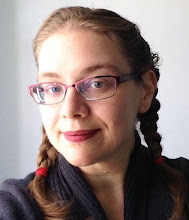I love green flowers. It's crazy how much I love green flowers. I fell in love with the Lime Light Hydrangea when it first came out. I'm feeling kind of guilty because I bought one and I'm betting the effect was achieved by genetic modification. Still, I love its strong showing every year. I love its burst of flowers every year. They come in as a beautiful spring green and then burst open in a show of pale green flowers that bleach out to a flock of white petals. Later in the year, they stain pink. I was inspired to do sketches and take pictures of last year's specimen. The flower in this painting does not exist. Technical drawing bores the holy hell out of me. I sketch and use photo references to get a gist but then move on to create textures and patterns of my own. I'll walk you through my process:
I start with a rough sketch. I've made notes at the bottom for myself. The Lime Light Hydrangea sends out shoots each spring which turn into branches for the foliage each year. At the end of each branch is a flower. This is the reason why you prune Hydrangeas in the fall. Prune them in the spring and you prune off all the potential flower buds.
I sketched a specimen and used my photos to create the branch/skeleton structure. The notes read: Main Stem = tri (3 secondary stems extend from the main branch as it grows) Secondary = bi (the secondary stem then sends out two stems away from itself as it grows) tertiary = alternating (the subsequent tertiary stems then branch out in an alternating pattern to grow flower buds). This complexity boils down to the simple pattern of Fibonacci numbers. Nature follows this pattern again and again.
Here is where the fun begins. In following the Fibonacci pattern and allowing it to break every once and again, you can accurately create a realistic composition. This is what I thought about while I drew in stems and flowers. Watching my drawing grow, and spire, and divide ever upwards, I couldn't help but think about galaxies and the big bang. As our universe sprouted and grew ever outwards, we continue to expand and develop, branching and rising.
After my sketch was complete, It was time to begin the painting process. This was a great excuse to employ my favorite color: Yellow Green!!!! I began by washing over the entire composition with a yellow green that was heavy on the yellow. I used primarily a mixture of Sennelier watercolors. I used Phthalo Green Light, Cadmium Yellow Light, and Sap Green.
I scanned the first image but as the paper distorted, I abandoned it for my camera. The next layer was to be a slightly greener wash of yellow green to make the flowers begin to contrast and bring a little depth.
I wanted to begin mapping out the areas of shadow and it was about here that I stopped documenting and just spent time painting. It is only so often you can interrupt your flow of work for documentation before it becomes detrimental to your process.
I love the shades of green that are featured in this piece but the piece would not have had a rich feel to it if I had just stayed within that range of color. Variety truly is the spice of life. I created shadows from my light green pallet by mixing in a little Walnut Ink from local ink and paint makers Belly of the Flea. I was surprised as how accommodating and easy to work with the ink was. It was best friends with my Sennelier paints and I liked the results.
I employed Ultramarine Deep and Walnut Ink to create the initial wash for the dark background that you can see on the right of the image above. I think the color on the right was 3 washes of paint. I mixed Walnut Ink and Payne's Gray to make the final color of the dark background. The shade on the left represents 2 washes of the Walnut and Payne's Gray mix. It was nice and thick compared with the thin washes that were done previously. The end result is a deep velvety black that carries depth not normally found in a prefabricated black. It's a shame my photographs and scans don't really show that.










